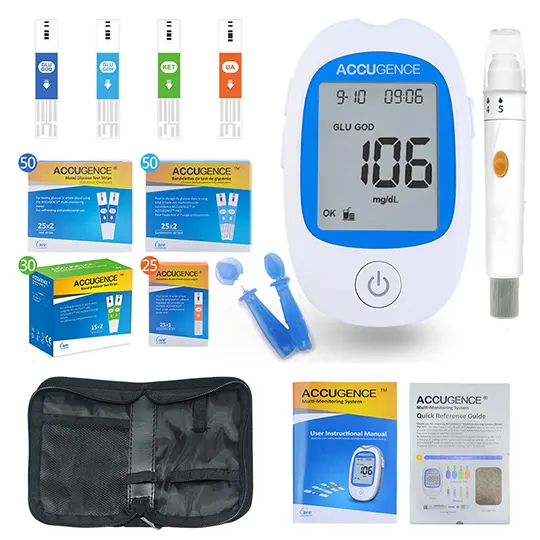Dosing and uses of Voraxaze (glucarpidase)
Adult dosage forms and strengths
injection, as lyophilized powder for reconstitution
- 1,000 units/vial
Methotrexate Toxicity
Indicated for treatment of toxic plasma methotrexate concentrations (>1 micromole/L) in patients with delayed methotrexate clearance due to impaired renal function
50 units/kg as a single IV injection over 5 minutes
Renal & Hepatic Impairment
Renal impairment: No dose adjustment is recommended
Hepatic impairment: No specific studies have been conducted
Pediatric dosage forms and strengths
injection, as lyophilized powder for reconstitution
- 1,000 units/vial
Methotrexate Toxicity
Indicated for treatment of toxic plasma methotrexate concentrations (>1 micromole/L) in patients with delaye methotrexate clearance due to impaired renal function
50 units/kg as a single IV injection over 5 minutes
Clinical trials in children
- Effectiveness in pediatric patients was established in 22 patients in the efficacy dataset; 12 were pediatric patients with ages ranging from 5-16 years
- The pooled clinical safety database included data for 147 patients from 1 month up to 17 years; no overall differences in safety were observed between pediatrics and adult patients
Renal & Hepatic Impairment
Renal impairment: No dose adjustment is recommended
Hepatic impairment: No specific studies have been conducted
Voraxaze (glucarpidase) adverse (side) effects
1-10%
Paresthesias (2%)
Flushing (2%)
Nausea/vomiting (2%)
Headache (1%)
Hypotension (1%)
<1%
Blurred vision
Diarrhea
Hypersensitivity
Hypertension
Rash
Throat irritation/throat tightness
Tremor
Frequency not defined
Antibody formation
Warnings
Contraindications
None
Cautions
Serious allergic reactions (occurred in <1% of patients)
Leucovorin is a substrate for glucarpidase; other potential substrates of glucarpidase include reduced folates and folate antimetabolites (eg, folic acid, L-methylfolate, pemetrexed, pralatrexate, trimethoprim, pentamidine)
Immunogenicity: 17% (n=16) of patients developed anti-glucarpidase antibodies; 12 of the 16 patients had received 1 dose and the other 4 patients had received 2 doses
Monitoring methotrexate serum concentrations
- Methotrexate concentrations within 48 hours following administration of glucarpidase can only be reliably measured by a chromatographic method
- DAMPA (4-deoxy-4-amino-N10-methylpteroic acid) is an inactive metabolite of methotrexate resulting from treatment with glucarpidase that interferes with the measurement of methotrexate concentration using immunoassays (ie, immunoassays overestimates the methotrexate concentration)
- Due to the long half-life of DAMPA (~9 hours), measurement of methotrexate using immunoassays is unreliable for samples collected within 48 hours following glucarpidase administration
Continuation and timing of leucovorin rescue
- Leucovorin is a substrate for glucarpidase
- Do not administer leucovorin within 2 hr before or after glucarpidase
- No dose adjustment is recommended for the continuing leucovorin regimen because the leucovorin dose is based on the patient’s pre-glucarpidase methotrexate concentration
- For the first 48 hours after glucarpidase, administer the same leucovorin dose as given prior to glucarpidase
- Beyond 48 hours after glucarpidase, administer leucovorin based on the measured methotrexate concentration
- Do not discontinue therapy with leucovorin based on the determination of a single methotrexate concentration below the leucovorin treatment threshold
- Therapy with leucovorin should be continued until the methotrexate concentration has been maintained below the leucovorin treatment threshold for a minimum of 3 days
- Continue hydration and alkalinization of the urine as indicated
Pregnancy and lactation
Pregnancy category: C
Lactation: Unknown whether distributed in breast milk; caution advised
Pregnancy categories
A: Generally acceptable. Controlled studies in pregnant women show no evidence of fetal risk.
B: May be acceptable. Either animal studies show no risk but human studies not available or animal studies showed minor risks and human studies done and showed no risk.
C: Use with caution if benefits outweigh risks. Animal studies show risk and human studies not available or neither animal nor human studies done.
D: Use in LIFE-THREATENING emergencies when no safer drug available. Positive evidence of human fetal risk.
X: Do not use in pregnancy. Risks involved outweigh potential benefits. Safer alternatives exist.
NA: Information not available.
Pharmacology of Voraxaze (glucarpidase)
Mechanism of action
Recombinant bacterial enzyme that hydrolyzes the carboxyl-terminal glutamate residue from folic acid and classical antifolates such as methotrexate
Converts methotrexate to its inactive metabolites 4-deoxy-4-amino-N10-methylpteroic acid (DAMPA) and glutamate
Provides an alternate nonrenal pathway for methotrexate elimination in patients with renal dysfunction during high-dose methotrexate treatment
Absorption
Peak Plasma Concentration: 3.3 mcg/mL
AUC: 23.3 mcg•hr/mL
Distribution
Vd: 3.6 L
Elimination
Half-life (based on serum activity levels): 5.6 hr; 8.2 hr (renal impairment)
Half-life (based on serum total concentrations): 9 hr
Systemic clearance: 7.5 mL/min
Administration
IV Preparation
Reconstitute the lyophilized powder in the vial with 1 mL of sterile saline for injection, USp
Do not shake
Roll and tilt the vial gently to mix
Inspect the vial and discard if the solution is not clear, colorless, and free of particulate matter
Use reconstituted solution immediately or store under refrigeration at 36-46°F (2-8°C) for up to 4 hr if not used immediately
Contains no preservative and is supplied as a single-use viaL
Discard any unused product
IV Administration
Administer IV as a bolus over 5 minutes
Flush IV line before and after administration
Storage
Unopened vials are stable until date indicated on package when stored at refrigerated 36-46°F (2-8°C)
Reconstituted solution: May store under refrigeration at 36-46°F (2-8°C) for up to 4 hr if not used immediately
Do not freeze



